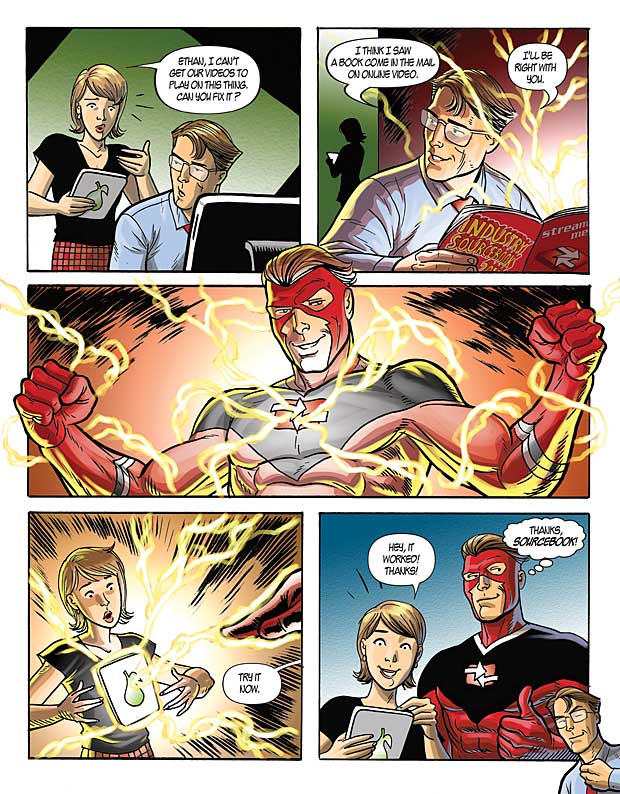Publisher's Note: What Is a Superhero, Anyway?
You’re probably wondering why we a created a superhero for the cover of this year’s Sourcebook. Any ideas?
Online video will save us all? Streaming Media to the rescue? Some have told me that I’ve got a swollen head over our media property. Admittedly, while there may be some truth to that, the idea was simply to inspire you as a superhero should.
When I was a kid, I loved all kinds of comic books—Spider-Man, Ghost Rider, Wolverine, and even Howard the Duck (shamefully, I still have an entire Howard the Duck collection sitting in my garage somewhere). I think many of us in our childhood found a superhero that, for some reason, we could identify with. For me, it was The Flash. He was the first real “specialty” superhero, as introduced by writer Gardner Fox and artist Harry Lampert in 1940. He did one thing and did it better than anyone else—he could run fast. Really, really fast. And while I couldn’t fly or turn myself invisible, I could actually run too, and I could pretend that I was running faster than the wind itself. It was graspable: something that I could practice, aspire to, and wholeheartedly imagine … being The Flash. Winning a running race against my friends who pretended to be Batman, with all kinds of nonsense gadgets, or Superman, who seemed to be the answer to everything, meant the world to me. “Go ahead and pretend to fly, but watch me run!” I’d say.
But getting back to the cover. So, what are the makings of a superhero? I’d sum that up by saying it’s a character with extraordinary powers, commonly created by some outside force or event (such as Peter Parker getting bitten by a spider). Do we have that here? Check.
I apologize for circling back to YouTube to sum up both an industry and a superhero metaphor, but I think it’s one that anyone can easily understand. According to Danielle Sacks of Fast Company (www.fastcompany .com/magazine/152/blown-away.html), who posted the day I wrote this (Jan. 12, 2011), “YouTube’s revenue has grown from somewhere between $100 million and $250 million in 2008 to just shy of $1 billion in 2010. … YouTube says 94 of the top 100 brand advertisers have now run campaigns. …” Sacks cites Adam Butler, a brand manager at Kraft Foods, Inc. for Philadelphia Cream Cheese, who realized that YouTube is a perfect outlet for how-to videos. Butler came up with the Real Women of Philadelphia competition and signed celebrity chef Paula Deen to lead it.
To kick off the campaign, Kraft spent $375,000 to buy YouTube’s homepage for a day, including a video in which Deen challenged viewers to create their own videos to show off the recipes they’d invented. The launch video was watched by 51 million people, says Butler, with 10 million watching it to completion and almost 100,000 clicking through to Kraft’s site. “By November 2010, in addition to the 25 million recipe views, he says, Real Women helped boost Philly’s revenue by 5%, the first material lift in five years,” according to Sacks. “‘You look at those numbers; they almost don’t even make sense,’ he says. ‘It’s bigger than TV.’” Honestly, this guy deserves a cape.
So what about the whole good versus evil thing for a superhero? Well, if knowledge is power and generally considered good, then we’ve got ourselves a hero here: the 2011 Streaming Media Industry Sourcebook. It’s the kind of instruction manual that the Greatest American Hero only wished he had to go along with the fancy suit.
Enjoy the comic on the opposite page, and enjoy this eighth annual Sourcebook. The industry is moving as fast as The Flash these days, and we’ll help you keep up. May it inspire you and give you the power to succeed as the next superhero, in your own way, with online video.
